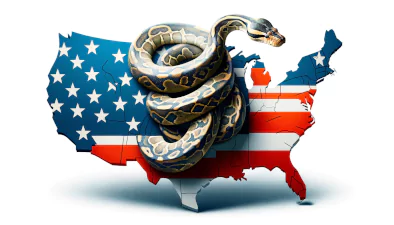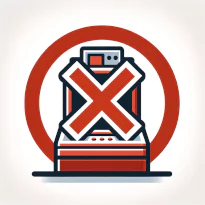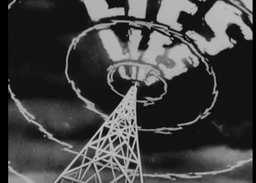Falsehoods, Allegations, and Questionable Accuracy
Propaganda in U.S. politics has a complex history and continues to play a significant role in contemporary political campaigns. Including policy debates, and general political discourse. Various forms and techniques of Falsehoods, Allegations, and Questionable Accuracy exist today. Propaganda is utilized to shape public opinion, mobilize supporters, and discredit opponents. Here are several aspects to consider:
Propaganda’s Stranglehold on America
In “Lies and More Lies: Propaganda’s Stranglehold on America”. We delve into the intricate web of misinformation and half-truths that has increasingly gripped the nation’s political landscape. Moreover, propaganda was once a term associated with wartime misinformation.
Propaganda has cunningly woven its way into the very fabric of American daily life. Influencing perceptions and decisions on critical social and political issues. This exploration seeks to unravel the complex layers of this phenomenon, examining how propaganda shapes public opinion and the implications it holds for the democratic process in the United States.
Table of Contents
- The History of Propaganda
- What is Propaganda?
- Central to Understanding the Impact of Propaganda
- Glittering Generalities Propaganda
- Propaganda Technique That Appeals to Average Joes
- Who Falls For Propaganda?
- What Is One Reason Why Propaganda Is Influential
- How Can Propaganda Be Both Positive and Negative
- War Propaganda:
- Cold War Era:
- Political Campaigns:
- Conclusion:
The History of Propaganda
Courtesy of Webster’s Dictionary.
Propaganda is today most often used in reference to political statements, but the word comes to our language through its use in a religious context. The Congregatio de propaganda fide (“Congregation for propagating the faith”) was an organization established in 1622 by Pope Gregory XV as a means of furthering Catholic missionary activity. The word propaganda is from the ablative singular feminine of propogandus, which is the gerundive of the Latin propagare, meaning “to propagate.”
The first use of the word propaganda (without the rest of the Latin title) in English was in reference to this Catholic organization. It was not until the beginning of the 19th century that it began to be used as a term denoting ideas or information that are of questionable accuracy as a means of advancing a cause.
What is Propaganda?
Webster’s Dictionary Definition of Propaganda
- capitalized: a congregation of the Roman curia having jurisdiction over missionary territories and related institutions
- the spreading of ideas, information, or rumors for the distinct purpose of helping or injuring an institution, a cause, or a person
- ideas, facts, or allegations spread deliberately to further ones cause or to damage an opposing cause
- also: a public action having such an effect
Central to Understanding the Impact of Propaganda

In America is its evolution. No longer confined to the blatant lies of past dictatorships. Today’s propaganda is a more sophisticated blend of truth and deception, making it harder to discern. It often comes cloaked in the guise of legitimate news, social media narratives, or even as part of political campaigns.
This subtlety in misinformation has a profound effect on public discourse. Polarizing opinions and creating echo chambers where critical thinking is overshadowed by emotionally charged rhetoric. By examining key examples from recent political events and policy debates. We see how this modern propaganda not only misleads but also deepens societal divides, challenging the very principles of informed democracy
Glittering Generalities Propaganda
Glittering generalities propaganda refers to a technique used in propaganda and advertising where emotionally appealing words are used to evoke positive feelings rather than to convey any concrete argument or information.
These words are highly valued concepts and beliefs for which people have strong positive associations, such as:
- Honor
- Glory
- Love of country
- Freedom
- Justice
The purpose of using glittering generalities is to associate a product, cause, or political candidate with these valued concepts without providing supporting information or reasoning.
This technique relies on the audience’s emotional response to these words to persuade them, often bypassing rational thought processes and critical thinking. Because these terms are vague and suggest different things to different people, they allow speakers or advertisers to appeal to a wide audience without making specific commitments or statements that could be critically analyzed or debated.
Glittering generalities are effective because they tap into the universal values and ideals that many people aspire to or hold dear. However, they can also be misleading or manipulative, as they can obscure the true nature of the subjects they describe, making it difficult for the audience to make informed decisions based on concrete evidence or facts.
Propaganda Technique That Appeals to Average Joes
The propaganda technique that appeals specifically to “average Joes” is often referred to as the “Plain Folks” appeal.
This strategy involves speakers, politicians, advertisers, or any persuaders presenting themselves as ordinary citizens to connect with the average person.
The aim is to make the audience believe that the speaker has their best interests at heart because they are “just like them.” This technique is used to build trust and credibility by downplaying the distance or difference between the persuader and the audience.
Here are some key aspects of the “Plain Folks” propaganda technique:
- Relatability: The persuader tries to appear relatable to the average person by using common language, sharing personal anecdotes, or engaging in everyday activities. This could involve politicians wearing casual clothes while visiting local businesses, celebrities talking about their humble beginnings, or companies showcasing their products being used by “regular” families.
- Simplicity: Messages delivered using this technique are often simple, avoiding technical jargon or complex concepts that might alienate the general audience. The idea is to make the message easily understood by everyone, reinforcing the notion that the speaker is on the same level as the average person.
- Shared Values: The persuader often emphasizes values and concerns that are presumed to be widely shared among the target audience, such as hard work, family, patriotism, or financial security. By highlighting these shared values, the speaker aims to forge a deeper connection with the audience.
- Trust and Credibility: By presenting themselves as one of the “common people,” persuaders aim to build trust and credibility. The underlying message is that, being “one of you,” the speaker would not mislead the audience or act against their interests.
The “Plain Folks” technique is effective because it exploits the natural human tendency to trust and support people who seem similar to ourselves.
It can foster a sense of community and mutual interest between the speaker and the audience. However, like other propaganda techniques, it can be used manipulatively, disguising the persuader’s actual intentions or the complexities of an issue by focusing on shared identity and simplistic solutions.
Who Falls For Propaganda?
Individuals more susceptible to propaganda often exhibit certain traits, with education playing a significant role in their vulnerability. Those with limited educational backgrounds may lack the critical thinking skills and media literacy necessary to analyze and question the information they receive. This lack of educational foundation makes it difficult for them to discern between reliable sources and manipulative content.
Additionally, those who have not been exposed to a diverse range of perspectives through higher education may be more inclined to accept propaganda that reinforces their existing beliefs, without the intellectual tools to challenge or contextualize these ideas.
Conversely, even well-educated individuals can fall prey to propaganda if they exist within echo chambers that reinforce their preconceptions, highlighting that susceptibility to propaganda is not solely a matter of formal education, but also of continual, active engagement with a variety of information sources and viewpoints.
What Is One Reason Why Propaganda Is Influential
One reason why propaganda is influential is its ability to exploit emotional responses rather than rational thought.
Propaganda often uses emotionally charged language, symbols, and imagery to create strong feelings of fear, pride, joy, or anger.
By appealing directly to people’s emotions, propagandists can bypass critical thinking and analytical processing, making individuals more likely to accept and act upon the messages without questioning their validity or the motives behind them.
This emotional engagement makes it easier to influence public opinion, shape perceptions, and motivate actions, even if the information presented is biased, misleading, or completely false.
How Can Propaganda Be Both Positive and Negative
Propaganda can be both positive and negative, depending on its use, intent, and the outcomes it seeks to achieve. The dual nature of propaganda stems from its ability to influence public opinion, shape perceptions, and mobilize people toward specific goals. Here’s how propaganda can manifest in both positive and negative ways:
Positive Aspects of Propaganda
- Promotion of Social Causes: Propaganda can be used to raise awareness about important social issues, such as public health campaigns (e.g., anti-smoking, vaccination drives), environmental conservation, and human rights. By appealing to the public’s emotions and values, it can mobilize support and encourage positive changes in behavior.
- Unity and Patriotism: During times of national crisis or war, propaganda can foster a sense of unity and patriotism among the populace. It can rally the citizens behind a common cause, promoting national solidarity and a collective effort to overcome challenges.
- Educational Tool: Propaganda techniques can be employed in educational contexts to promote positive behaviors, values, and attitudes. For example, campaigns encouraging reading, exercise, and healthy eating can utilize propaganda’s persuasive techniques for beneficial outcomes.
Negative Aspects of Propaganda
- Manipulation and Misinformation: Propaganda can be used to manipulate public opinion by distorting facts, spreading misinformation, or appealing to fears and prejudices. This can lead to misguided beliefs, hostility towards certain groups, and the undermining of democratic processes.
- Suppressing Opposition: Authoritarian regimes often use propaganda to suppress dissent and control the narrative. By monopolizing the flow of information, these governments can maintain power by preventing the public from accessing alternative viewpoints or criticizing the regime.
- War and Conflict: Propaganda can exacerbate conflicts by dehumanizing the enemy, spreading hate, and justifying violence. It can create an environment where dialogue and reconciliation are difficult, prolonging hostilities and suffering.
- Erosion of Trust: Overreliance on propaganda techniques, especially in political contexts, can erode trust in institutions, leaders, and the media. When the public perceives that information is consistently manipulated for political ends, it can lead to cynicism, apathy, and disengagement from civic participation.
The impact of propaganda, therefore, is not inherently good or bad but depends on how it is employed and for what purposes. Ethical considerations play a crucial role in determining whether the use of propaganda contributes to the public good or serves to manipulate and coerce.
War Propaganda:
Propaganda has been a significant tool in the theater of war, dating back to before WWI and WWII, when the U.S. government meticulously curated messages to build national unity, foster patriotism, and encourage citizen participation in the war efforts through enlistment and financial contributions. Graphics, slogans, and narratives glorifying the nation and demonizing the enemy were common.
World War II Propaganda Examples
- United States – “Uncle Sam Wants You”: This iconic poster featured Uncle Sam pointing directly at the viewer, with the caption “I Want You for U.S. Army.” It was designed to recruit soldiers.
- United Kingdom – “Keep Calm and Carry On”: This British poster was created to raise public morale in the event of a wartime disaster. It became widely known long after the war.
- Germany – Anti-Semitic Propaganda: Nazi Germany produced extensive propaganda depicting Jews as enemies of the German people, using stereotypes and false narratives to justify the Holocaust.
- Japan – Anti-American and Anti-British Propaganda: These posters often portrayed Western powers as monsters or demons, aiming to stir up nationalistic feelings and justify Japan’s war efforts.
- Soviet Union-Patriotic Posters: The USSR used posters to glorify the Red Army and the Soviet struggle against Nazi Germany, often depicting heroic soldiers and workers.
Propaganda for the Iraq War

Weapons of Mass Destruction (WMDs): The Bush administration asserted that Iraq possessed WMDs, a claim used to justify the invasion. Later, these weapons were not found, leading to widespread criticism and the view that the public had been misled.
- Links to Terrorism: The administration also suggested connections between Saddam Hussein’s regime and terrorist groups like Al-Qaeda. This narrative aimed to link the Iraq War to the broader War on Terror following the 9/11 attacks.
- Freedom and Democracy: The U.S. government promoted the idea of spreading freedom and democracy in the Middle East as a justification for the invasion. This theme was prevalent in speeches and media commentary.
- Media Coverage: The American media played a significant role in supporting the government’s narrative. Some networks were criticized for uncritically broadcasting administration claims and providing limited opposition viewpoints.
Both in WWII and during the Iraq War, propaganda played a crucial role in shaping public opinion and justifying military actions. The methods and mediums varied, but the intent to influence public perception and gain widespread support for governmental policies was a common thread.
Propaganda During the Vietnam War

Propaganda was extensive and varied, employed by both sides of the conflict to promote their respective agendas and sway public opinion.
Here Are Some Notable Examples:
- United States – Support for the War Effort: The U.S. government used propaganda to justify its involvement in Vietnam and to maintain public support for the war. This included emphasizing the threat of communism and the need to support South Vietnam in resisting North Vietnamese aggression.
- “Hearts and Minds” Campaign: This U.S. strategy aimed to win the support of the Vietnamese people through a combination of military action and civic assistance programs. Propaganda materials highlighted American efforts to bring democracy and development to South Vietnam.
- North Vietnamese Propaganda: North Vietnam, along with the Viet Cong, used propaganda to strengthen their cause, portraying the United States as imperialist invaders and themselves as patriotic defenders of Vietnamese independence.
- Anti-War Movement: In the United States and around the world, anti-war activists used propaganda to oppose the Vietnam War. This included iconic posters, music, and slogans like “Make Love, Not War,” emphasizing the human cost of the conflict and questioning its legitimacy.
- Media’s Role: Television and photojournalism played a significant role in shaping public perception of the war. Iconic images, such as the burning monk, the execution of a Viet Cong prisoner, and the “Napalm Girl,” had a profound impact on public opinion, often serving as unintentional anti-war propaganda.
- South Vietnamese Propaganda: The government of South Vietnam also engaged in propaganda efforts, often focusing on the dangers of communism and the benefits of alliance with the United States.
- The Draft: In the United States, the military draft was a focal point for propaganda from both supporters and opponents of the war. Pro-war propaganda emphasized duty and patriotism, while anti-draft propaganda highlighted issues of inequality and the moral implications of the war.
- Psychological Operations (PsyOps): Both the U.S. and North Vietnamese forces used psychological operations to demoralize enemy troops and gain support among civilians. This included leaflet drops, loudspeaker broadcasts, and other forms of messaging designed to influence attitudes and behaviors.
The Vietnam War was a complex conflict, and the propaganda used during this time reflected its multifaceted nature. It played a crucial role in shaping the perspectives and actions of governments, soldiers, and civilians involved in or affected by the war.
Cold War Era:
Throughout the Cold War, propaganda became the invisible arsenal in promoting anti-communist sentiments, both domestically and across the globe. It was leveraged to uphold democratic ideologies, counter Soviet influences, and portray communism as a global threat.
Cold War Era Propaganda Examples

- United States – “Duck and Cover” Campaign: This campaign, including a film featuring “Bert the Turtle,” was designed to educate American children and adults on how to protect themselves during a nuclear attack. It is now often cited as an example of the government’s attempt to downplay the severity of nuclear warfare.
- Soviet Union – Anti-American Propaganda: The USSR produced numerous posters and broadcasts depicting the United States as a warmongering, imperialist nation, often highlighting issues like racial discrimination and poverty in America to undermine its global image.
- United States – “The Red Scare” and McCarthyism: Propaganda during this period fueled the fear of communism. Senator Joseph McCarthy’s aggressive investigations and accusations led to a nationwide paranoia about communist infiltration.
- Berlin Wall Propaganda: Both East and West Germany used the Berlin Wall as a propaganda tool. East Germany presented it as a protective barrier against fascist elements, while West Germany used it as a symbol of communist oppression.
- Space Race Propaganda: The competition between the USSR and the USA to achieve space exploration milestones was heavily laden with propaganda. Each side used their achievements (like the Soviet’s Sputnik and Yuri Gagarin, and the USA’s Apollo moon landing) to showcase their technological and ideological superiority.
- Cultural Exchanges and Olympic Boycotts: Cultural events, including the Olympics, were often entangled in Cold War politics. The boycotts of the 1980 Moscow Olympics by the United States and other countries, and the subsequent Soviet-led boycott of the 1984 Los Angeles Olympics, were symbolic acts fueled by Cold War tensions.
- “Atoms for Peace” Program: Initiated by U.S. President Eisenhower, this program aimed to show the peaceful potential of atomic energy, contrasting it with the Soviet portrayal of the U.S. as solely interested in nuclear weapons.
These examples highlight the diverse strategies used by both the United States and the Soviet Union to promote their ideologies and discredit each other during the Cold War, using a mix of fear, national pride, and technological and cultural achievements.
Political Campaigns:
Propaganda in political campaigns, while varying in form and content across different eras and regions, typically employs certain key strategies to influence public opinion and voter behavior. Here are some examples:
- Attack Ads: These are advertisements that directly attack a political opponent’s character, record, or policy. They often use dramatic music, unflattering images, and emotional appeals to create negative perceptions.
- Spin and Media Manipulation: Politicians and their campaigns often “spin” information, presenting it in a way that favors their position or candidate. This can involve selectively presenting facts, outright misrepresenting information, or using media contacts to shape news coverage.
- Fearmongering: This tactic involves instilling fear in the electorate about potential outcomes if an opponent is elected. It might include exaggerating threats (such as crime, economic collapse, or national security risks) and presenting the candidate as the only solution.
- Bandwagon Effect: Campaigns often create the impression that a candidate is the inevitable or most popular choice, encouraging voters to “jump on the bandwagon.” This can be achieved through polls, large rallies, endorsements, and social media trends.
- Idealization and Heroism: Propaganda can also involve idealizing a candidate as a hero or the only one capable of solving the country’s problems. This can involve personal narratives, emphasizing their accomplishments, or portraying them as a figure of integrity and wisdom.
- Scapegoating: Blaming a particular group, entity, or political opponent for various problems, often without substantial evidence. This tactic diverts attention from more complex issues or shortcomings of the candidate using the tactic.
- Slogans and Sound Bites: The use of catchy slogans and memorable sound bites in political campaigns helps to simplify complex issues and create memorable associations with a candidate or cause.
- Social Media Manipulation: In the digital age, propaganda often involves the use of social media to spread false information, manipulate narratives, and create artificial trends or movements, often using bots or paid influencers.
Each of these tactics can be effective in shaping public opinion, mobilizing supporters, and influencing the outcome of elections. The use and impact of propaganda in political campaigns have evolved with technology, but the fundamental goal of swaying voters remains constant.
The 2020 U.S. presidential election, characterized by intense political polarization and occurring amidst the COVID-19 pandemic, witnessed a wide array of propaganda techniques from various entities.

Some Key Examples Include:
Misinformation and Disinformation: The election saw a significant spread of false or misleading information across social media platforms. This included rumors about voter fraud, mail-in voting security, and health risks at polling stations, among other topics.
- Deepfakes and Manipulated Media: Advances in technology led to the creation and distribution of deepfakes and other forms of manipulated media designed to discredit candidates or mislead voters.
- Social Media Campaigns: Both major parties utilized social media extensively, not only for traditional campaigning but also for spreading narratives favorable to their sides. This included targeted ads, viral memes, and coordinated messaging.
- Russian Interference: As with the 2016 election, there were concerns and evidence of Russian interference aimed at influencing the outcome of the election, primarily through social media campaigns and hacking attempts.
- Claims of Election Rigging: Following the election, there were widespread claims of election rigging and voter fraud, particularly from President Trump and his supporters. These claims were a major aspect of post-election propaganda, despite lacking substantial evidence and being refuted by multiple recounts and court rulings.
- Polarizing Narratives: The election was marked by highly polarized narratives from both sides. For example, President Trump’s campaign often portrayed Joe Biden as a puppet of the radical left, while Biden’s campaign focused on Trump’s handling of the COVID-19 pandemic and issues of character and leadership.
- Mail-In Voting Controversy: The expansion of mail-in voting due to the pandemic became a significant issue. Propaganda around this topic included unfounded claims about the susceptibility of mail-in voting to widespread fraud.
- Political Ads: Television and online ads were used extensively, often employing emotional appeals, selective presentation of facts, and attacks on opponents’ records and character.
- Conspiracy Theories: The election period saw the rise and spread of various conspiracy theories, some of which gained substantial followings, such as QAnon. These theories often impacted public perception and discourse.
- COVID-19 Pandemic: The pandemic itself became a central theme in election propaganda, with conflicting narratives about the government’s response and the severity of the virus being used to influence public opinion.
The 2020 election demonstrated the evolving nature of propaganda in the digital age, highlighting the powerful role of social media, the challenges of combating misinformation, and the impact of external interference on democratic processes.
Slogans and Messaging:
Through catchy slogans and simplified messaging, politicians and parties make their policies and visions easily digestible and memorable, enabling broader reach and influence among the electorate. Propaganda in slogans and messaging plays a crucial role in political campaigns, as these short, catchy phrases can powerfully influence public perception and voter behavior. The 2016 and 2020 U.S. presidential elections featured several memorable slogans that encapsulated the core messages of the campaigns. Here’s a look at some key examples from these elections:
2016 Presidential Election
- “Make America Great Again” (Donald Trump): This slogan was a central part of Donald Trump’s campaign. It evoked a sense of nostalgia and a desire to return to a past perceived as better. The phrase was effective in resonating with voters who felt left behind by economic and social changes.
- “Stronger Together” (Hillary Clinton): This was the main slogan of Hillary Clinton’s campaign, emphasizing unity, inclusiveness, and collective strength. It served as a counterpoint to the more individualistic and nationalistic tone of Trump’s campaign.
- “I’m With Her” (Hillary Clinton): This slogan was used to rally support around Clinton, particularly aiming to highlight her potential to be the first female president. It was a call for solidarity, especially among female voters.
- “Basket of Deplorables” (Hillary Clinton): Though not an official campaign slogan, Clinton’s remark about “a basket of deplorables” referring to some of Trump’s supporters became a notable phrase. Trump’s campaign turned it into a propaganda tool, using it to rally his base against perceived elitism and out-of-touch attitudes.
2020 Presidential Election
- “Keep America Great” (Donald Trump): As an incumbent, Trump updated his slogan to “Keep America Great,” suggesting that his presidency had already achieved making America “great” and needed to continue.
- “Build Back Better” (Joe Biden): Biden’s campaign used this slogan to suggest a need to recover and rebuild from the Trump presidency, as well as from the damage caused by the COVID-19 pandemic. It implied a sense of restoration and improvement.
- “America First” (Donald Trump): This slogan continued from Trump’s 2016 campaign, emphasizing nationalism, the prioritization of American interests, and a skepticism of globalism.
- “Our Best Days Still Lie Ahead” (Joe Biden): This optimistic slogan was part of Biden’s message of hope and positive change, aiming to inspire voters with the promise of a brighter future.
In both the 2016 and 2020 elections, these slogans were more than just catchphrases; they were carefully crafted pieces of propaganda designed to encapsulate complex political narratives in a simple, memorable way. They were used to rally supporters, define the campaigns, and shape the public discourse around the elections.
Social Media:
The advent of platforms like Facebook and Twitter revolutionized the spread of propaganda. Bite-sized yet impactful content, such as memes and videos, circulate at unprecedented speeds, influencing political opinions and debates.
Disinformation and Fake News:
Online Disinformation:
The digital era sees an overflow of manipulated or outright false information, creating a murky, misleading online political environment that complicates the citizen’s ability to discern truth from falsehood.
Foreign Interference:
Concerns loom over external entities deploying propaganda to subtly manipulate electoral outcomes and political discourses, showcasing the vulnerability of information in the interconnected world.
Grassroots and Astroturfing:
Grassroots Movements:
Propaganda mechanisms are also rooted in genuine grassroots movements, enabling the amplification of messages, fostering unity, and encouraging mobilization towards common causes.
Astroturfing:
In a deceptive play, some political entities craft illusions of grassroots support, manufacturing narratives of widespread public backing to legitimize and empower specific agendas or campaigns.
Conclusion:
Understanding propaganda’s evolving strategies and multifarious channels is crucial in navigating the U.S. political landscape. While it can be a source of manipulation and deception, propaganda also stands as a testament to the power of communication in political expression, advocacy, and democratic engagement. Recognizing its mechanisms and influences allows for a more discerning and critically engaged citizenry in the political process.

